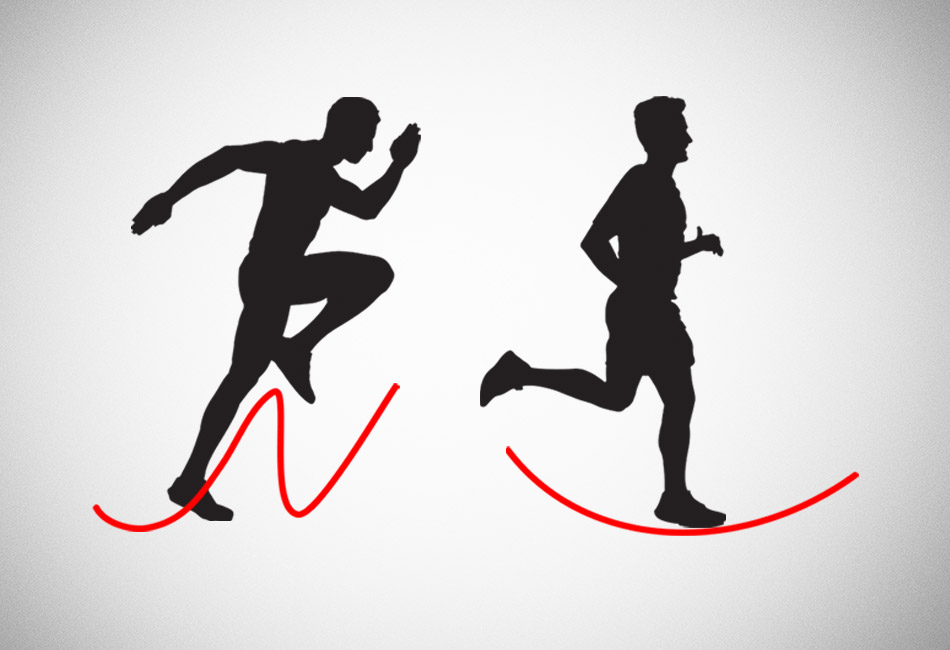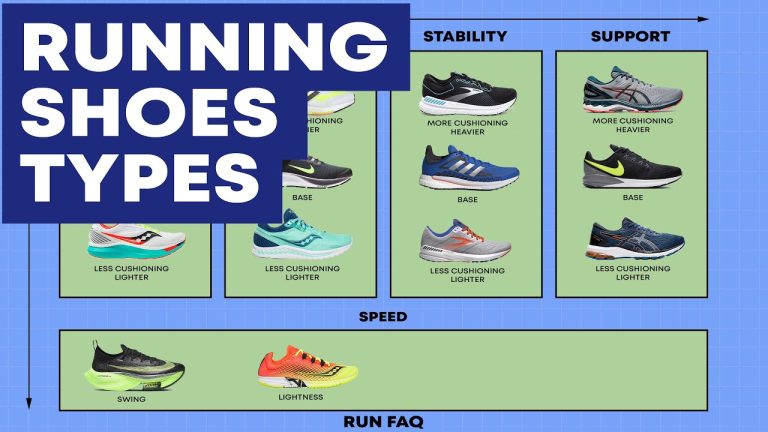How To Run Faster
To run faster, focus on improving your running form and incorporating speed workouts into your training routine. Proper form includes posture, arm movement, and stride length to increase efficiency and reduce risk of injury.
Running faster is a goal shared by many athletes and fitness enthusiasts. Whether you’re looking to improve your race times or simply boost your cardiovascular fitness, increasing your running speed can be a rewarding challenge. By combining proper running form with targeted speed workouts, you can make significant strides in your speed and endurance.
We’ll explore effective strategies and tips to help you run faster and achieve your performance goals.
Proper Warm-up
Running faster is a common goal for many athletes and fitness enthusiasts. Proper warm-up plays a crucial role in achieving this goal by preparing your muscles and joints for the demands of running. Incorporating dynamic stretching and activation exercises into your warm-up routine can help improve your speed, mobility, and overall performance. In this section, we will explore the significance of a proper warm-up and delve into dynamic stretching and activation exercises to help you run faster.
Dynamic Stretching
Dynamic stretching involves moving your body through a range of motion to prepare your muscles for activity. It helps increase blood flow, flexibility, and mobility while reducing the risk of injury. Examples of dynamic stretches include leg swings, walking lunges, high knees, and arm circles. Performing dynamic stretching before a run can help improve your running performance by enhancing muscle elasticity and joint flexibility.
Activation Exercises
Activation exercises are designed to activate and engage specific muscles that are essential for running. These exercises help awaken dormant muscles and improve the mind-muscle connection, leading to better muscle recruitment during your run. Some effective activation exercises include glute bridges, resistance band walks, clamshells, and hip flexor marches. By incorporating activation exercises into your warm-up routine, you can enhance your running speed and efficiency by activating the muscles responsible for propulsion and stability.

Credit: www.progressivesoccertraining.com
Building Endurance
Building Endurance is key to running faster. To enhance your stamina and improve your overall performance, incorporating specific training techniques is essential.
Long Distance Runs
Include weekly long runs to strengthen muscles and increase running efficiency.
Interval Training
Engage in interval training to boost cardiovascular endurance and speed.
Improving Technique
When it comes to improving your running speed, focusing on your technique can make a significant difference. Let’s dive into the key aspects of running form that can help you run faster.
Ideal Running Form
Maintaining proper running form is crucial for speed and efficiency.
- Keep your head up and eyes forward, looking ahead.
- Relax your shoulders and keep your arms at a 90-degree angle.
- Engage your core muscles to support your body and maintain balance.
- Land softly on the balls of your feet with a quick turnover.
Arm Swing And Stride Length
Optimizing your arm swing and stride length can help propel you forward faster.
- Swing your arms in a coordinated motion with your legs for momentum.
- Maintain a relaxed grip and arm movement perpendicular to your body.
- Focus on extending your stride to cover more ground with each step.
Conclusion:
By mastering your ideal running form, arm swing, and stride length, you can unlock your full speed potential.
:max_bytes(150000):strip_icc()/How-To-Run-Faster-GettyImages-546824169-2000-bc4ca8785d0e481ca233f9cac56064cb.jpg)
Credit: www.health.com
Strength Training
Introductory paragraph about ‘Strength Training’Strength training plays a pivotal role in improving running speed and endurance. These exercises build muscle, increase power, and help prevent injury, ultimately enhancing your running performance. Incorporating both leg and core exercises into your strength training routine can significantly boost your speed and agility.
Leg Exercises
Content regarding leg exercisesLeg exercises are essential for runners as they strengthen the lower body, improve stability, and enhance stride length. By incorporating the following leg exercises into your workout regimen, you can develop strength and power in your lower extremities, thus contributing to improved running speed:
- 1. Squats: Perform 3 sets of 12 reps with proper form to build strength in the quadriceps, hamstrings, and glutes.
- 2. Lunges: Incorporate walking lunges or stationary lunges into your routine to target individual legs, promoting balanced strength and stability.
- 3. Calf raises: Strengthen the calf muscles by performing 3 sets of 15 reps to improve push-off power during running.
Core Exercises
Content regarding core exercisesEngaging in core exercises is crucial for runners, as a strong core contributes to efficient running form, stability, and power transfer. Incorporate these core exercises into your strength training routine to improve your running performance:
- 1. Plank: Hold a plank position for 30-60 seconds, engaging the core muscles to enhance overall stability and posture.
- 2. Russian twists: Perform 3 sets of 15 reps to strengthen the obliques and improve rotational power, aiding in efficient running mechanics.
- 3. Bicycle crunches: Engage the entire core by performing 3 sets of 20 reps to enhance agility and stability during running.
Rest And Recovery
Rest and recovery are crucial components of any runner’s training regime. Many runners believe that to improve their speed and endurance, they only need to focus on intense workouts and pushing themselves to the limit. However, neglecting rest and recovery can actually hinder performance and increase the risk of injury. In this article, we will discuss the importance of rest days, as well as the role of sleep and nutrition in optimizing recovery.
Importance Of Rest Days
Rest days are essential for runners to allow their bodies to recover and repair from intense training sessions. When you engage in high-intensity workouts, your muscles experience micro-tears, and rest days provide the necessary time for these tears to heal. Without sufficient rest, your muscles can become fatigued, leading to decreased performance and an increased risk of injury.
Additionally, rest days help prevent overtraining syndrome, which occurs when you push your body beyond its limits without giving it enough time to recover. Overtraining syndrome can result in symptoms such as fatigue, mood disturbances, decreased immune function, and even a plateau in performance. By incorporating regular rest days into your training schedule, you give your body the chance to adapt and grow stronger.
Sleep And Nutrition
Sleep plays a vital role in the recovery process and is essential for optimal performance. During sleep, your body releases growth hormones, repairs damaged tissues, and restores energy stores. Aim for 7-9 hours of quality sleep every night to allow your body to recover effectively.
Nutrition is another critical aspect of the recovery process. Ensure that you consume a balanced diet rich in carbohydrates, protein, and healthy fats to replenish energy stores and assist in muscle repair. Hydration is also crucial for optimal recovery, so make sure to drink plenty of water throughout the day.
| Key points: |
|---|
| Rest days are essential for muscle recovery and injury prevention. |
| Sleep is important for growth hormone release and tissue repair. |
| A balanced diet rich in carbohydrates, protein, and healthy fats aids in muscle repair and energy replenishment. |
| Hydration is crucial for optimal recovery. |
In conclusion, while it may be tempting to push yourself hard every day, remember that rest and recovery are just as important as rigorous training. By incorporating regular rest days, getting enough sleep, and maintaining a balanced diet, you can optimize your body’s recovery process and boost your running performance.

Credit: darebee.com
Frequently Asked Questions Of How To Run Faster
How Can I Increase My Running Speed?
To increase your running speed, focus on proper form, incorporate interval training, strengthen your muscles, and consistently challenge yourself with speed workouts.
What Are Some Effective Techniques To Run Faster?
To run faster, try techniques such as interval training, fartlek runs, hill sprints, and plyometric exercises. These exercises can help improve your speed and power.
Is It Important To Have A Proper Warm-up Before Running?
Yes, a proper warm-up before running is crucial to prevent injuries and enhance performance. It helps increase blood flow, loosens up muscles, and prepares your body for the physical demands of running.
Conclusion
Incorporating the strategies discussed in this post will undoubtedly help you improve your running speed. Remember to focus on proper technique, progressively increase your speed, and maintain a consistent training schedule. By implementing these tips and staying committed to your training, you’ll be well on your way to running faster.
Keep pushing yourself and enjoy the progress!






